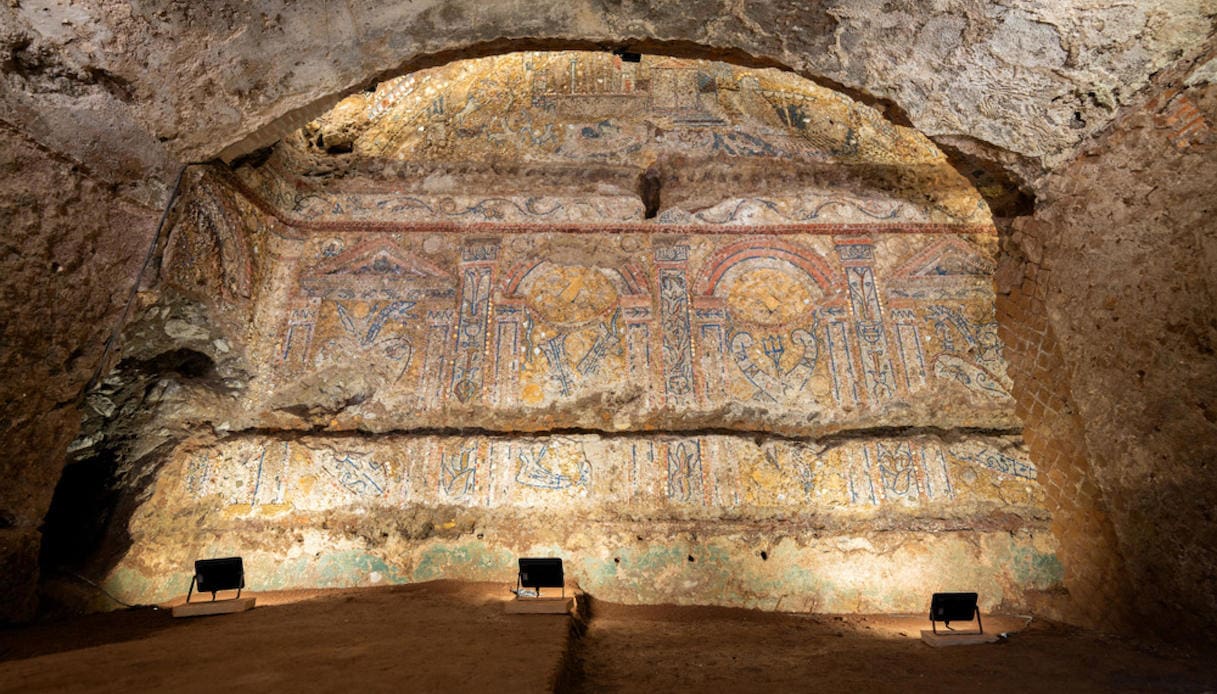Some of them were identified as early as 2018 precious remains of an ancient Roman domus they have now resurfaced near the Colosseum Archaeological Park, during an excavation campaign conducted as part of a study and research project. This is a sensational discovery, especially because of what was discovered among the environments brought to light during the work: the experts found some very rare mosaicswhich cannot be compared with anything similar belonging to the period in question.
The remains of a Roman domus found
Considered one of the archaeological sites most important in Italy, the Colosseum is a true mine of incredible treasures: only a short time ago the Tiberian domus was reopened to the public, and now experts have brought to light another jewel of inestimable value. We’re talking about wall remains of an ancient domus from the late Republican eralocated on the slopes of the Palatine Hill, exactly behind the area where the Horrea Agrippiana are located (the warehouses built along the commercial road that connected the port on the Tiber and the Roman Forum).
The excavations carried out in 2018 had made it possible to identify some wall structures, but only now do the luxurious environments that characterized this domus emerge. The house probably developed on several floors, with numerous terraces: its construction seems to have gone through three different phases, spanning a period from the second half of the 2nd century BC to the end of the 1st century BC. Based on the first studies, his appears clear arrangement around a garden which was also intended to serve as an atrium.
“After the reopening of the Tiberian domus and the improvement of the accessibility of the Flavian Amphitheatre, the heart of Rome has revealed an authentic treasure, which we will take care of safeguarding and making accessible to the public. This is an important result, which repays long study and research work and which is part of one of the Park’s priority objectives, that of knowledge and its diffusion. The archaeological excavation will end in the first months of 2024 and we will then work intensely to make this place, among the most evocative of ancient Rome, accessible to the public as soon as possible” – he stated Gennaro SangiulianoMinister of Culture.
Read also: Secrets of the Cave Painters
The precious mosaics
The most interesting discovery occurred in one of the main rooms of the domus, called summer cave: it is a banquet hall built on the image of a natural cave. It was used during the summer months, because it was much cooler than other rooms, and its guests needed to be entertained by fascinating water features. In fact, lead pipes were found, set between the decorated walls, which allowed the passage of water and the creation of real shows. But the surprises didn’t end there.
Inside the specus aestivus, archaeologists found a wonderful mosaic wall covering, which you can’t compare to anything similar. It is a “rustic” mosaic, made with different types of materials: shells, flakes of white marble, Egyptian blue tiles, fragments of spongy travertine, precious glass and pozzolana cretones, all bonded with mortar. They are also complex and varied scenes depicted, a real sequence of figures. According to experts, the mosaic dates back to the last decades of the 2nd century BC
Read also:Visiting Pompeii: 11 Top Attractions, Tips & Tours





